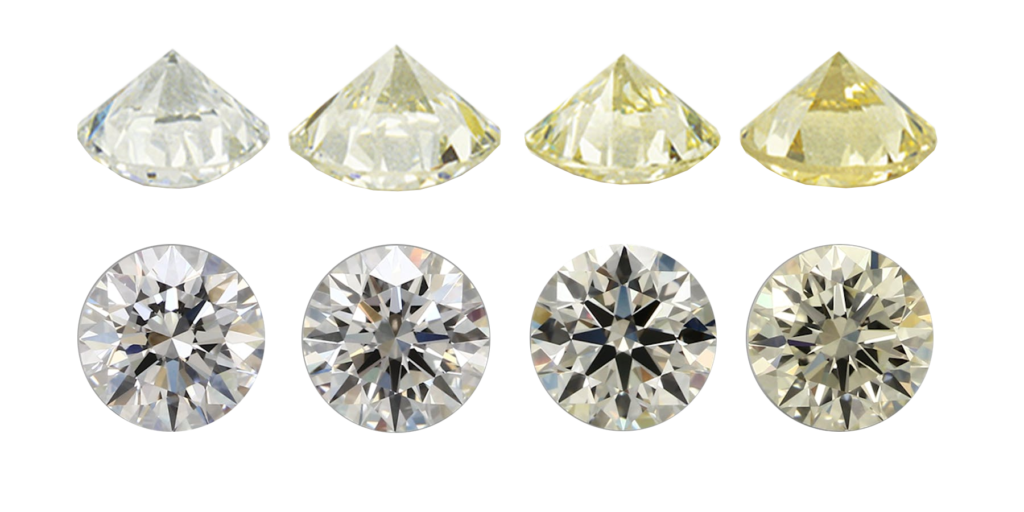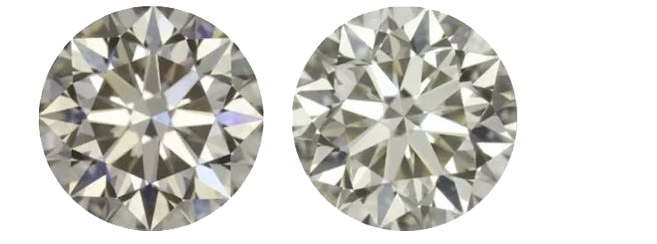The colour of a diamond is graded on a colour spectrum which ranges from D (river / finest white +) to Z (tinted). Beyond the colour saturation level of Z, the range of fancy colours begins. Diamonds come in almost every conceivable shade. Brown, grey and yellowish stones are priced slightly below white stones. Much more expensive and extremely rare are the shades pink, red, green or blue as well as intense yellow.


The colour grading is carried out in a diamond laboratory through a combination of highly technical measuring methods, which are repeatedly checked against the results from specialised diamond experts who grade by eye. Previously certified comparison stones are also used to help with the process.
What is fluorescence?
When diamonds are exposed to ultraviolet radiation, some of them emit visible light. The strength of this fluorescence can be measured. The scale ranges from none through faint, medium and strong to very strong. This characteristic does not influence the determination of colour or degree of clarity but is an additional identifying feature in a laboratory report.
In addition to colours and hues, there are also undertones in colouration which are not mentioned on a certificate, the so-called “tinge”. Stones with grey, green and brownish, as well as milky undertones are of lower value. These are referred to as “BGM” (brown, green, milky).

Left image: brilliant with brownish tinge, colour (=bad)
Right image: brilliant without brownish tinge, colour (=good)
